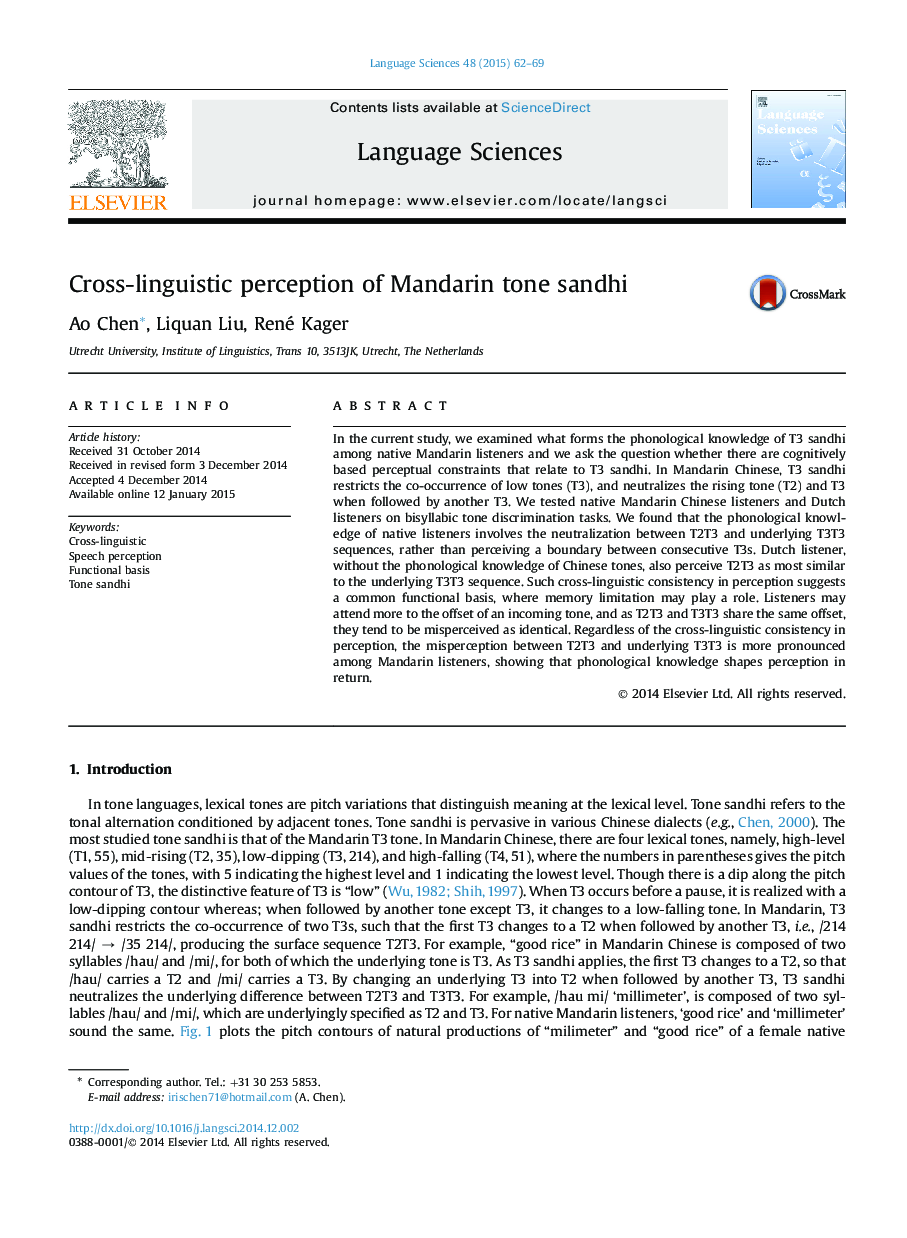| کد مقاله | کد نشریه | سال انتشار | مقاله انگلیسی | نسخه تمام متن |
|---|---|---|---|---|
| 1103066 | 1488154 | 2015 | 8 صفحه PDF | دانلود رایگان |
• T3 sandhi knowledge involves neutralization between underlying and surface forms.
• Similar T3 sandhi discrimination patterns are found among non-native listeners.
• The perception of T3 sandhi may have a cognitive basis.
• Memory constraints might be a reason for the neutralization in T3 sandhi.
In the current study, we examined what forms the phonological knowledge of T3 sandhi among native Mandarin listeners and we ask the question whether there are cognitively based perceptual constraints that relate to T3 sandhi. In Mandarin Chinese, T3 sandhi restricts the co-occurrence of low tones (T3), and neutralizes the rising tone (T2) and T3 when followed by another T3. We tested native Mandarin Chinese listeners and Dutch listeners on bisyllabic tone discrimination tasks. We found that the phonological knowledge of native listeners involves the neutralization between T2T3 and underlying T3T3 sequences, rather than perceiving a boundary between consecutive T3s. Dutch listener, without the phonological knowledge of Chinese tones, also perceive T2T3 as most similar to the underlying T3T3 sequence. Such cross-linguistic consistency in perception suggests a common functional basis, where memory limitation may play a role. Listeners may attend more to the offset of an incoming tone, and as T2T3 and T3T3 share the same offset, they tend to be misperceived as identical. Regardless of the cross-linguistic consistency in perception, the misperception between T2T3 and underlying T3T3 is more pronounced among Mandarin listeners, showing that phonological knowledge shapes perception in return.
Journal: Language Sciences - Volume 48, March 2015, Pages 62–69
